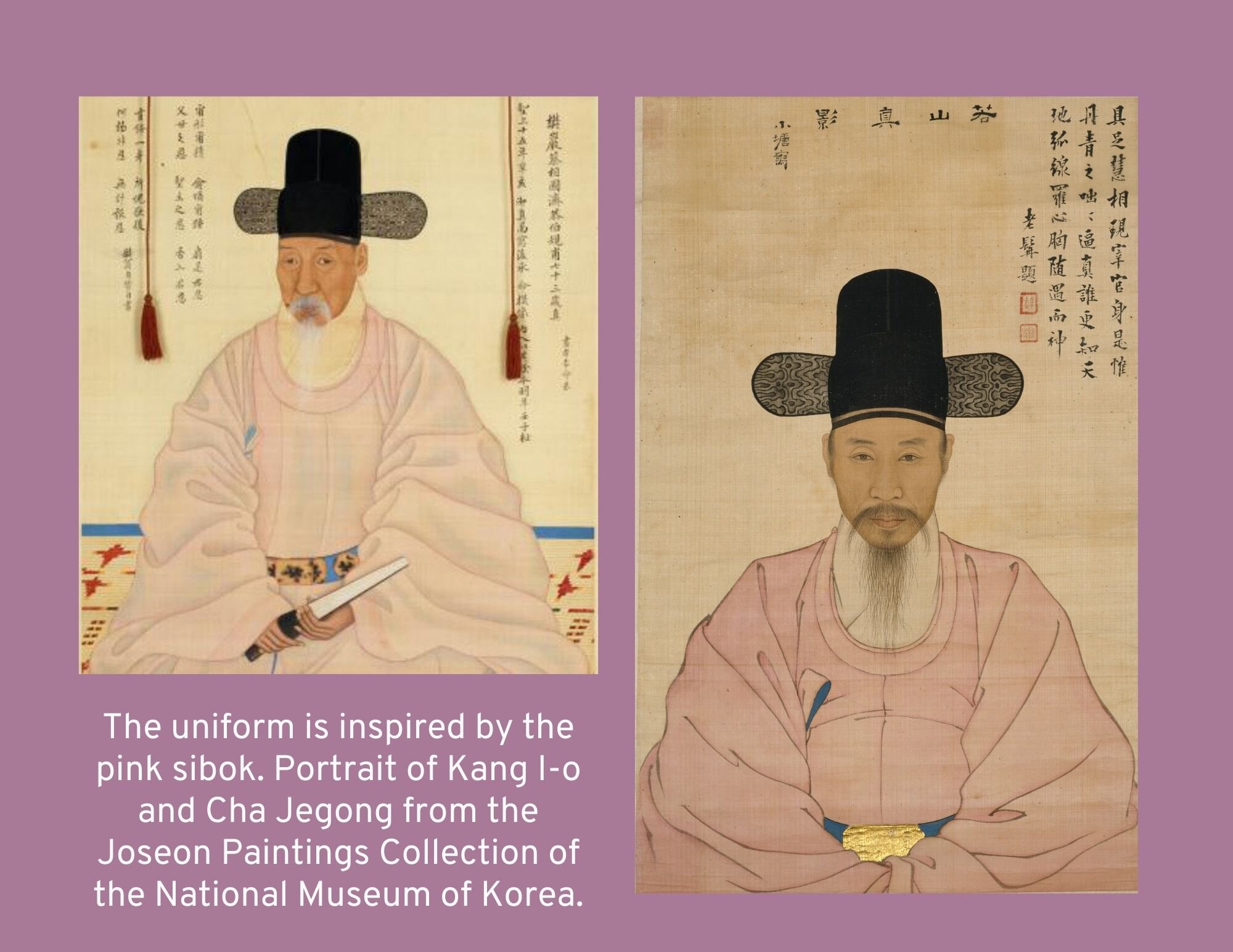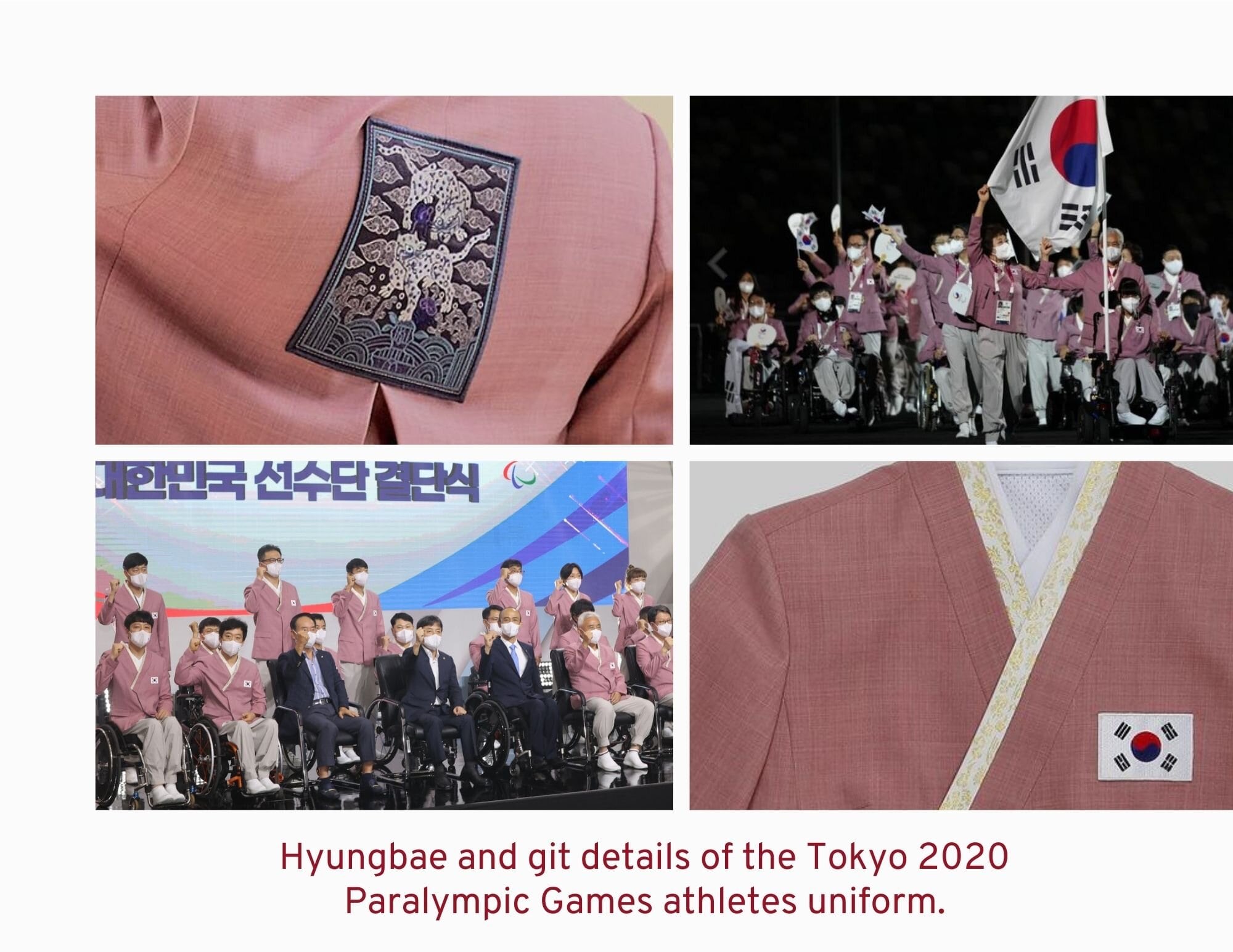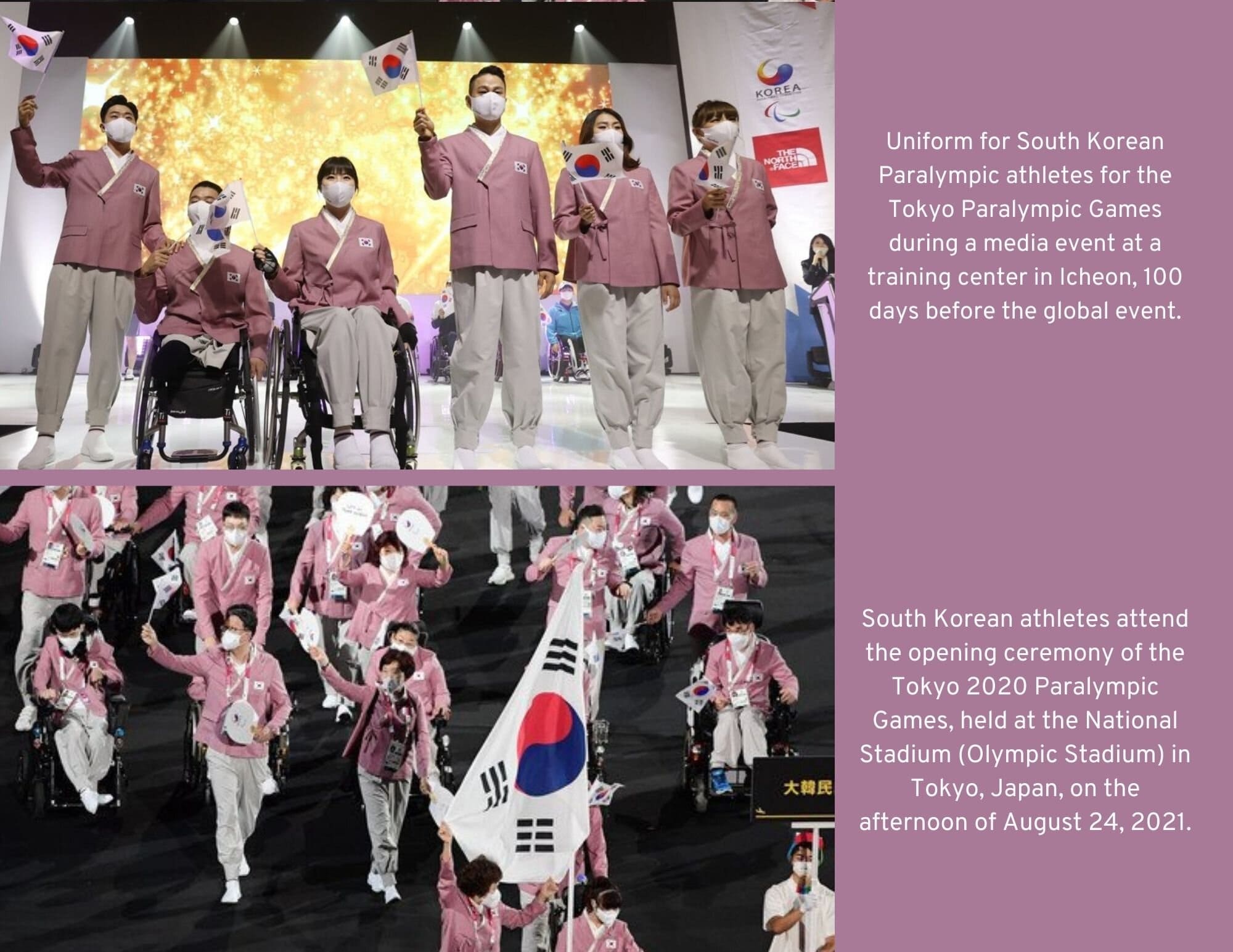- 한국어
- English
- 日本語
- 中文
- العربية
- Español
- Français
- Deutsch
- Pусский
- Tiếng Việt
- Indonesian
By Honorary Reporter Dayviana Diaz from Cuba
Photos = Wikimedia Commons, Dolsilnai, Korea.net
The Ministry of Culture, Sports and Tourism and the Hanbok Advancement Center seek to boost the image of Hanbok and expand the use of the traditional attire in daily life, such as in school and work uniforms, on the stages of K-pop idols and even the attire of the national team for the 2020 Tokyo Summer Paralympics.
The following three fundamental aspects best highlight the symbolism behind the traditional clothing.
Designs, colors and ornaments
The design used for the official uniform of the national Paralympic team was inspired by Hanbok, which dates back to the ancient era of the Three Kingdoms. The jeogori, a unisex bolero jacket, is the lower garment, and the chima is the female skirt. Male and female athletes can both wear wide pants. The collar at the front of the garment was inspired by the jikryeong design, a coat with a straight neckline, wide sleeves and pleated sides.
The color selection for jeogori is down pink, which was from the safflower plant cultivated for use in making colors in ancient times. The color pink was worn by high-ranking officials in danryeong robes in the latter part of the Joseon Dynasty (1392-1910). Hanbok was implemented during the reign of King Seonjo under the names sangbok and sibok. These official uniforms were light pink with a round neck and were worn together with the samo, a black silk hat.

To decorate the Paralympian uniforms, gold leaf decorations with motifs of the royal family was used on the collar of the jacket or git to wish victory and good fortune. This technique called geumbak often featured designs related to traditional Korean beliefs, mainly flowers, geometric patterns, dragons and phoenixes, to convey the noble status of the wearer. In addition, only royalty could use this technique, which dates back to the Unified Silla (668–935) and Goryeo Dynasty (918-1392) eras.

(Dolsilnai)
The embroidered insignia hyungbae on the back of the Paralympian uniforms wasattached to the chest and back of the daily attire of high-ranking officials from the early 17th century, and civil servants wore it until the 1900s. This style appeared after the uniform danryeong was discontinued. The hyungbae shows a pair of tigers that traditionally symbolize in Korea strength, protection, determination, health, bravery and intelligence. Thus insignia was used by athletes who represented Korea at the 2020 Tokyo Paralympics.

In addition to preserving Korean culture and traditions through old and new designs, Hanbok-style uniforms show the world the traditional clothing and pride of the Korean people.
kalhong617@korea.kr
*This article is written by a Korea.net Honorary Reporter. Our group of Honorary Reporters are from all around the world, and they share with Korea.net their love and passion for all things Korean.